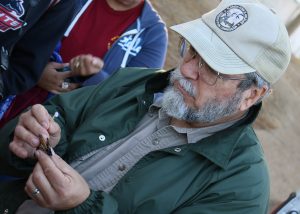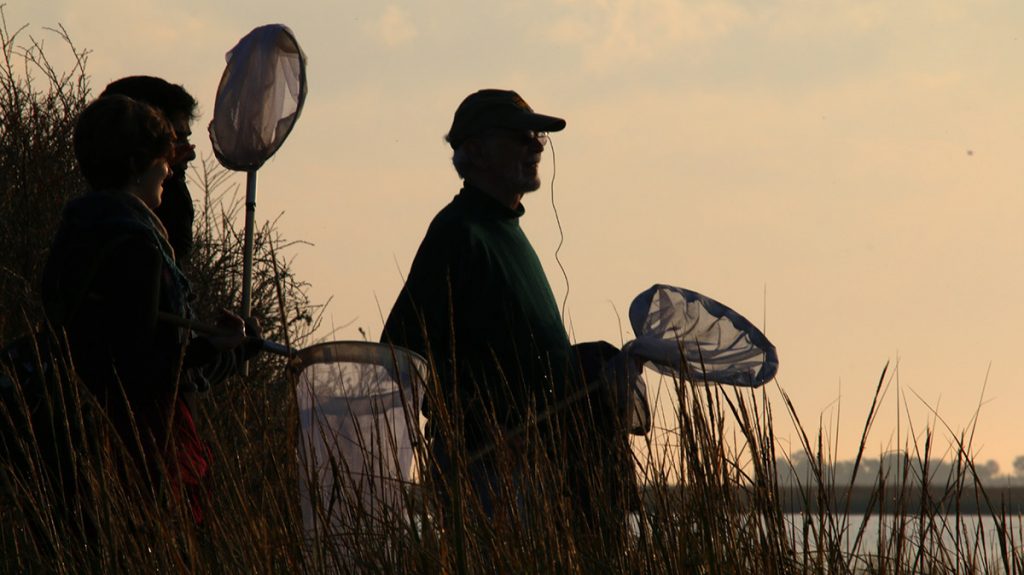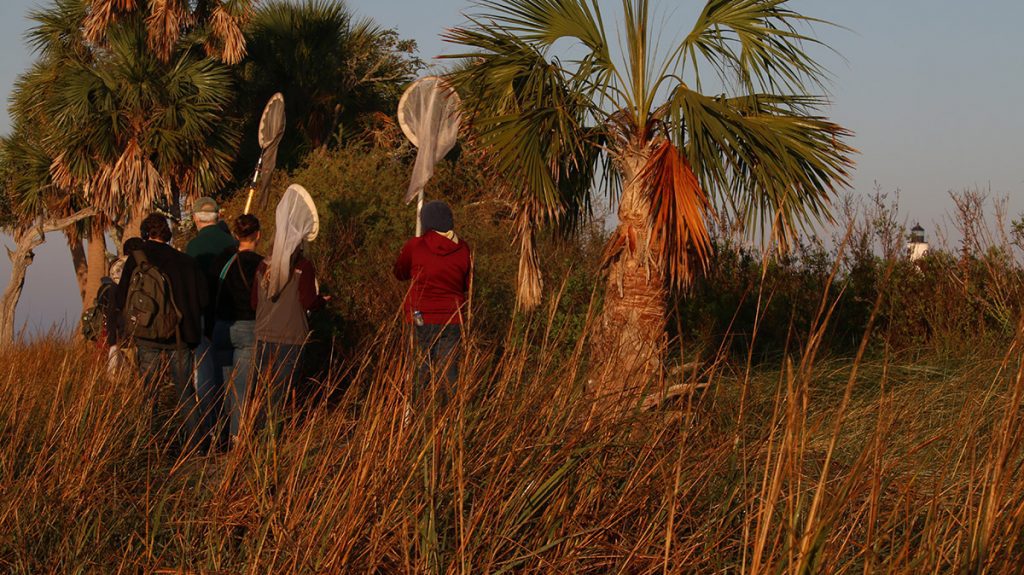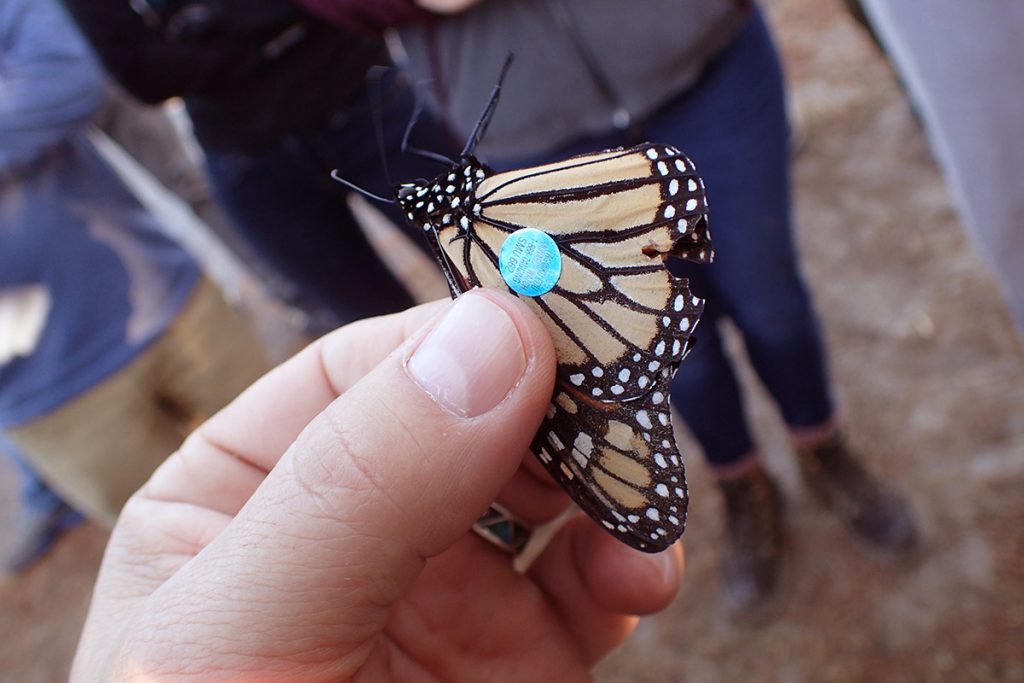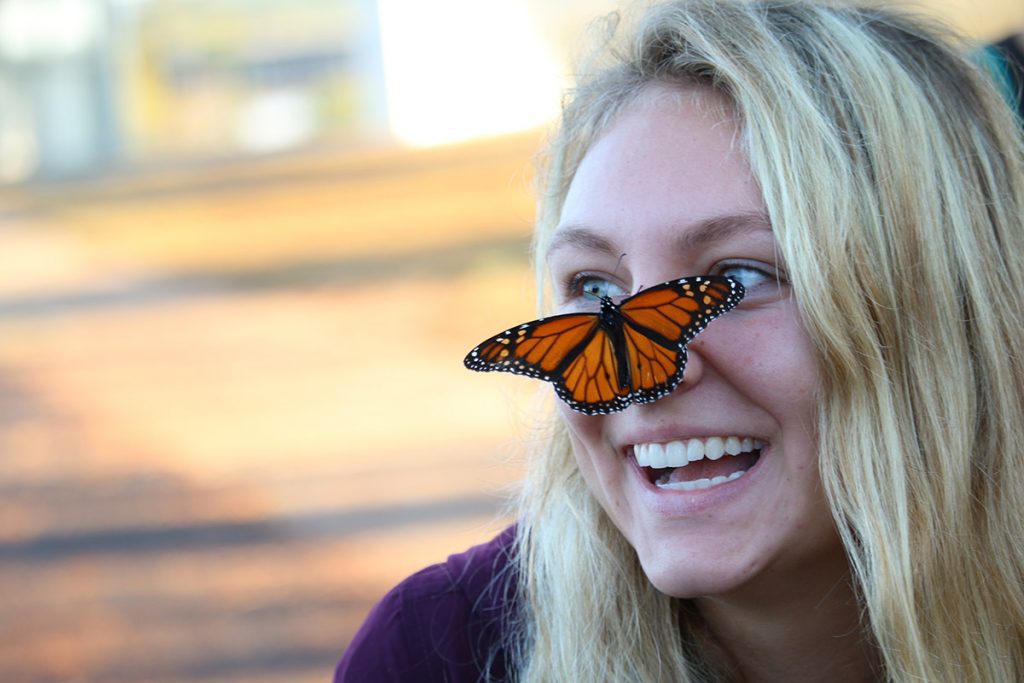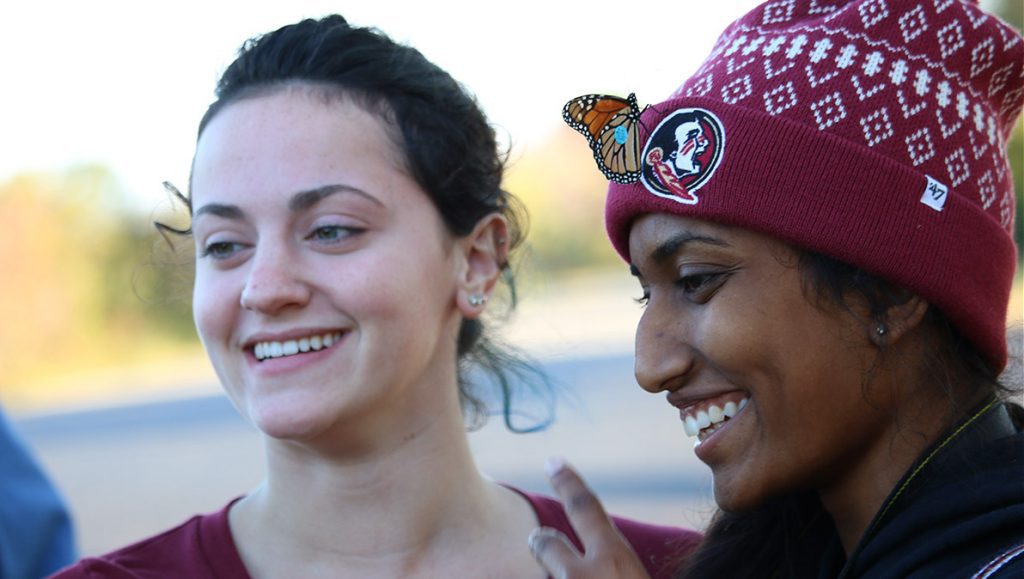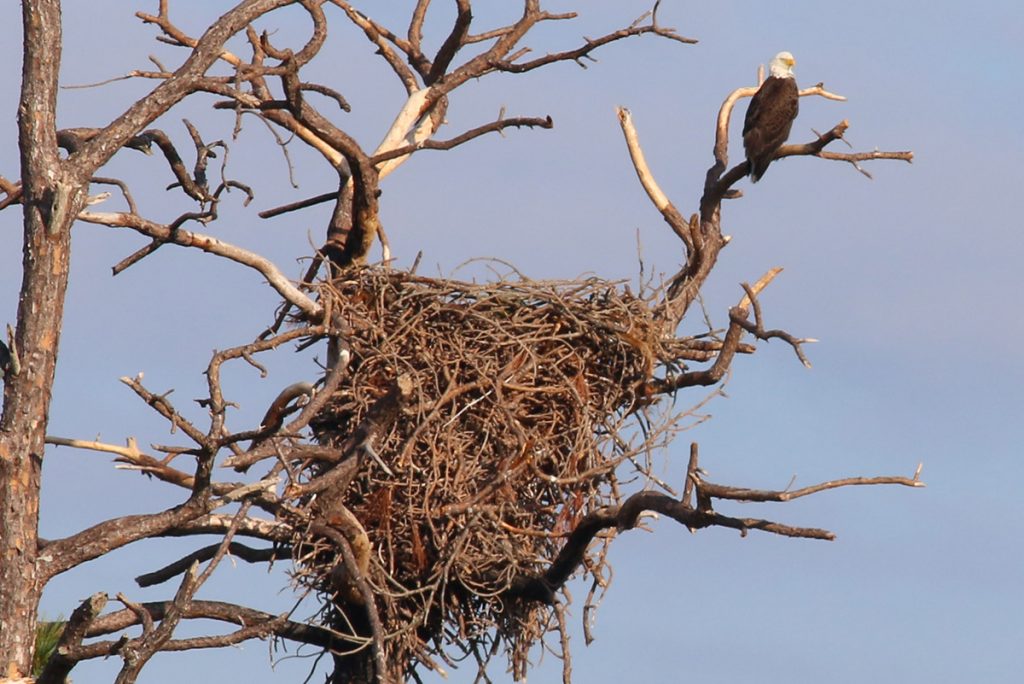In the video below, first time WFSU producer Zach Hunter takes us to the St. Marks National Wildlife Refuge for an early morning of trapping and tagging monarch butterflies. Earlier in Local Routes season 2, we watched as ecology producer Rob Diaz de Villegas and his family raised monarch caterpillars. Here, we see another phase of this butterfly’s remarkable journey.
Subscribe to the WFSU Ecology Blog to receive more videos and articles about our local, natural areas, and subscribe to the WFSU Ecology Youtube Channel.
Rob Diaz de Villegas WFSU Media
To tag monarch butterflies, you have to get to where they are before they wake up. Lucky for us, they go to a pretty good place to watch a sunrise. When the sun finally rose over Lighthouse Pond in the Saint Marks National Wildlife Refuge, volunteers had been at work for over an hour. It was mid November, just past the peak migration season. There weren’t many butterflies to see.
The trees where we found the monarchs were right along the water’s edge. From there, the butterflies would take off over the Gulf, bound for central Mexico. Maybe on one those Mexican mountaintops, someone will capture one of our tagged butterflies from among the millions overwintering there. If they do, and report it to Monarch Watch, we’ll know just that much more about monarch migration.
I was ecstatic when Zach Hunter wanted to cover tagging in the Refuge. I told him I’d come along and help him. Last summer, my family raised a few dozen monarchs from caterpillars found on our garden milkweed. I read up on them as a species, and learned about their multigenerational migration north. Now, I would get to see them complete the circle on their way south.
Zach made the migration animation above for this blog post. He is one of our primary graphic artists, creating graphics for shows like Bandwagon.
It takes three to four generations butterflies to migrate from Mexico to the northern US and Canada. These live three to four weeks. The ones traveling south live six to eight months. They are born on the last leg of the northern migration, then turn around and fly to Mexico to overwinter, and then start the first leg of the northern migration in the spring.
It’s an amazing journey. And everything we know about it comes from decades of dedicated folks tagging and releasing butterflies.
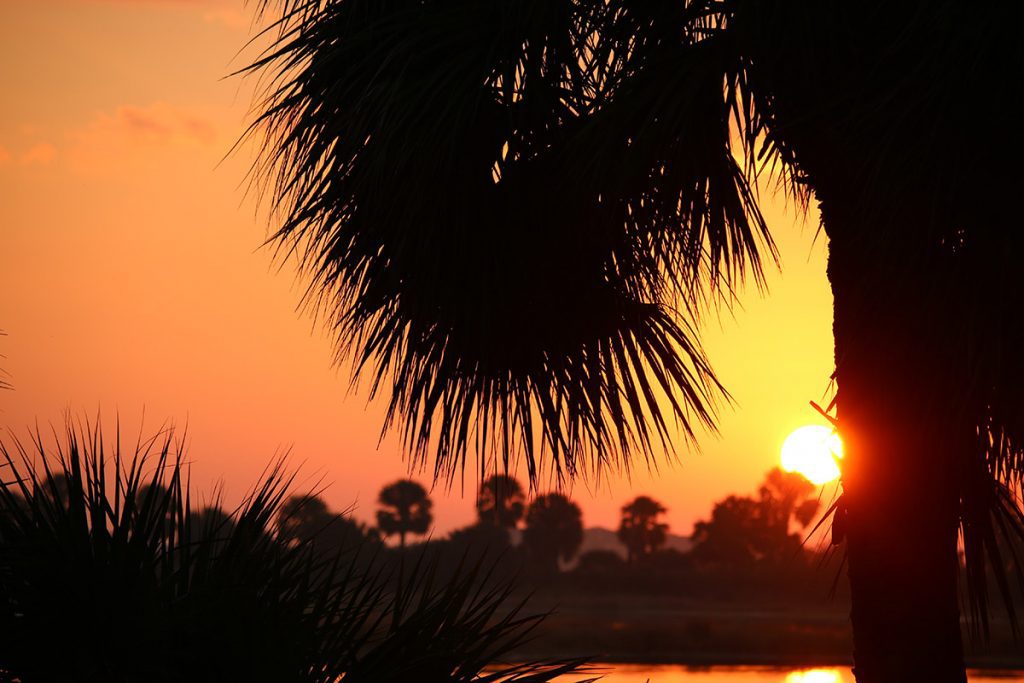
Con- you have to wake up early to get to the Refuge by 6 am. Pro- you get to be on the Refuge when the sun rises.
Tracking Monarch Migration Through Tagging
As recently as sixty years ago, no one knew where monarchs went in the winter. Canadian zoologist Fred Urquhart, and his wife Norah, devised a method of tagging butterflies in order to track their movement. Starting in the 1950s, the Urquharts began to hear from people who found tagged butterflies in Mexico. By the mid 1970s, the specific locations of monarch overwintering colonies had been identified.
Today, Monarch Watch continues to tag butterflies to learn more about their migration habits, and the size and makeup of the populations migrating. This information could be useful in conservation efforts.
The St. Marks National Wildlife Refuge is a key monarch way station in our area. Its miles of undeveloped coastlines were intended to benefit migratory birds, but provide valuable habitat for butterflies as they pass through the area. The Refuge embraces this role. Their Milkweed Initiative provides valuable nectar and larval food for monarchs. The Refuge also works with Florida Fish and Wildlife’s David Cook, who coordinates the volunteer tagging program.
Message in a Bottle
Our walk around Lighthouse Pond netted a handful of butterflies. The sun didn’t rise until we started our walk back towards the lighthouse, so volunteers had to spot monarchs in the dim predawn light.
The second leg of our search took us to the marshes behind the lighthouse. Volunteers walked single file on a strip of sand between the Spartina grass and the tree line. While they didn’t catch anything there, I enjoyed walking the shore at dawn as pelicans dove for breakfast.
When tagging the monarchs in the parking lot, David Cook mentioned that they and captured a butterfly with a white tag a couple of weeks earlier. They were able to trace its origin to Toronto.
One of the monarchs they caught on our visit already had a blue tag like the ones used at St. Marks. Richard RuBino, a retired volunteer who had once overseen the program, theorized that it had been tagged one or two weeks earlier. Why had it been sticking around? “This is unusual for it to be this warm at this time of year,” He said.
They would know for sure when they checked the number on the tag. They could then cross reference it with the data they and been recording.
“Once we tag it, it’s kind of like putting a note in a bottle, ” David said. “Someone has to find the bottle and read the note.”
Catch and Release
David delicately placed little blue stickers on the monarch’s wings. He had a specific way that he released them:
These volunteers’ noses and hats could very well have been the last thing the monarchs touched before taking off across the Gulf.
Richard RuBino estimates that between 30,000 and 40,000 butterflies have been tagged at the Saint Marks Refuge. Likewise, Refuge Ranger Scott Davis estimates that 40,000 milkweed plants have been planted on the Refuge over the last two years.
Those kinds of numbers would be impossible without volunteer support.
If you’re interested in helping tag monarch butterflies, you can write David Cook at david.cook@myfwc.com. If you’d like to help plant milkweed, write Scott Davis at themonarchmilkweedinitiative@gmail.com.

